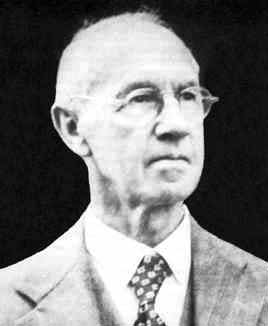

تاريخ الرياضيات

الاعداد و نظريتها

تاريخ التحليل

تار يخ الجبر

الهندسة و التبلوجي


الرياضيات في الحضارات المختلفة

العربية

اليونانية

البابلية

الصينية

المايا

المصرية

الهندية


الرياضيات المتقطعة

المنطق

اسس الرياضيات

فلسفة الرياضيات

مواضيع عامة في المنطق


الجبر

الجبر الخطي

الجبر المجرد

الجبر البولياني

مواضيع عامة في الجبر

الضبابية

نظرية المجموعات

نظرية الزمر

نظرية الحلقات والحقول

نظرية الاعداد

نظرية الفئات

حساب المتجهات

المتتاليات-المتسلسلات

المصفوفات و نظريتها

المثلثات


الهندسة

الهندسة المستوية

الهندسة غير المستوية

مواضيع عامة في الهندسة

التفاضل و التكامل


المعادلات التفاضلية و التكاملية

معادلات تفاضلية

معادلات تكاملية

مواضيع عامة في المعادلات


التحليل

التحليل العددي

التحليل العقدي

التحليل الدالي

مواضيع عامة في التحليل

التحليل الحقيقي

التبلوجيا

نظرية الالعاب

الاحتمالات و الاحصاء

نظرية التحكم

بحوث العمليات

نظرية الكم

الشفرات

الرياضيات التطبيقية

نظريات ومبرهنات


علماء الرياضيات

500AD

500-1499

1000to1499

1500to1599

1600to1649

1650to1699

1700to1749

1750to1779

1780to1799

1800to1819

1820to1829

1830to1839

1840to1849

1850to1859

1860to1864

1865to1869

1870to1874

1875to1879

1880to1884

1885to1889

1890to1894

1895to1899

1900to1904

1905to1909

1910to1914

1915to1919

1920to1924

1925to1929

1930to1939

1940to the present

علماء الرياضيات

الرياضيات في العلوم الاخرى

بحوث و اطاريح جامعية

هل تعلم

طرائق التدريس

الرياضيات العامة

نظرية البيان
Charles Ernest Weatherburn
المؤلف:
E J G Pitman
المصدر:
Charles Ernest Weatherburn, Professor of Mathematics
الجزء والصفحة:
...
18-5-2017
553
Died: 1974 in Australia

Charles Weatherburn studied under H S Carslaw at the University of Sydney graduating with an M.A. in 1906. He then came to England, after the award of a scholarship, and studied at Trinity College Cambridge where he attended lectures by Whitehead, Whittaker and Hardy. He sat the Mathematical Tripos examinations in 1908, the same year as Brodetsky, and was awarded a First Class degree.
Returning to Australia, Weatherburn was appointed to Ormond College of the University of Melbourne. Pitman, writing in [1], describes how Weatherburn taught him as a student at the University of Melbourne (1916,1917,1920):-
There were very few honours students, and I was the only Ormond student doing honours mathematics in my year. I went to his room once a week, and sat near his desk while he talked and wrote notes for me. Always he wrote on the back of foolscap paper, the front of which was filled with an early draft of a section of one of his books. He took me through the topics in his two books on vector analysis, and perhaps also some differential geometry... He was neat and clear and interesting, and for me it was a very easy and efficient way of mastering vector analysis.
Certainly vector analysis was not universally accepted at this time and Weatherburn fought the battle for its acceptance against opposition from people such as Harold Jeffreys. Gibbs and Heaviside had been early exponents of the vector calculus while its chief opponents had been Tait. When Weatherburn published the first of his two volumes on vector analysis in 1921 he wrote in the introduction:-
The work of Gibbs and Heaviside drew forth denunciations from Professor Tait, who considered any departure from quaternionic usage in the treatment of vectors to be an enormity.
Weatherburn left Sydney in 1923 to take up the chair of mathematics in Canterbury College, University of New Zealand. At about this time his research interests changed from vector analysis to differential geometry. He wrote two major volumes Differential geometry of three dimensions (1927, 1930) as well as nearly 30 papers on this topic. Hodge, reviewing the second volume, wrote:-
Much of the volume is devoted to subjects to which the author has himself contributed in the last few years, particularly in the theory of families of curves and surfaces, and of small deformations. Other topics are however included, with the result that the two volumes together give an account of most of the principal branches of classical differential geometry. An elementary account of Levi-Civita's theory of parallel displacements is given.
In 1929 Weatherburn returned to Australia taking up the chair of mathematics at the University of Western Australia (founded 1911), becoming the first holder of this chair. He held this post until he retired in 1950 but his excellent sequence of research papers stopped in 1939. He published An Introduction to Riemannian Geometry and the Tensor Calculus in 1938 and it was reissued in 1966. After 1939 his only publication was a textbook on statistics which he published in 1946.
Articles:
- E J G Pitman, Charles Ernest Weatherburn, Professor of Mathematics, Math. Sci. 6 (1) (1981), 1-12.
 الاكثر قراءة في 1880to1884
الاكثر قراءة في 1880to1884
 اخر الاخبار
اخر الاخبار
اخبار العتبة العباسية المقدسة

الآخبار الصحية















 قسم الشؤون الفكرية يصدر كتاباً يوثق تاريخ السدانة في العتبة العباسية المقدسة
قسم الشؤون الفكرية يصدر كتاباً يوثق تاريخ السدانة في العتبة العباسية المقدسة "المهمة".. إصدار قصصي يوثّق القصص الفائزة في مسابقة فتوى الدفاع المقدسة للقصة القصيرة
"المهمة".. إصدار قصصي يوثّق القصص الفائزة في مسابقة فتوى الدفاع المقدسة للقصة القصيرة (نوافذ).. إصدار أدبي يوثق القصص الفائزة في مسابقة الإمام العسكري (عليه السلام)
(نوافذ).. إصدار أدبي يوثق القصص الفائزة في مسابقة الإمام العسكري (عليه السلام)


















